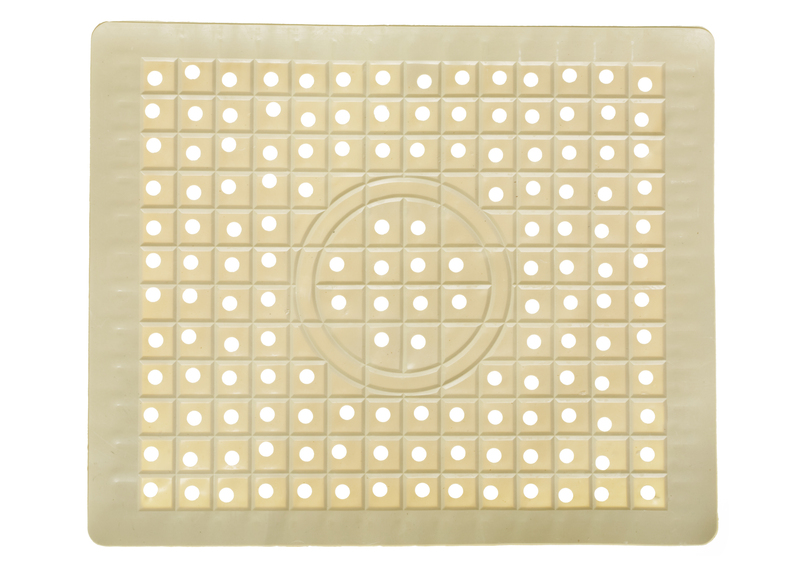Create an Allergen-Reduced, Dust-Free Sanctuary at Home
Posted on 30/08/2025
Create an Allergen-Reduced, Dust-Free Sanctuary at Home
Are you or your loved ones constantly struggling with allergies, sneezing fits, a runny nose, or itchy eyes? Maintaining an allergen-reduced, dust-free environment is essential for better health and comfort, especially for households with children, seniors, or those with respiratory concerns. Creating a dust-free sanctuary at home doesn't have to be overwhelming. By following proven strategies and integrating modern solutions, you can transform your living space into a true haven from allergens.

Understanding Home Allergens and Dust
Before we dive into solutions, it's crucial to grasp what household allergens and dust really are. Dust is more than just dirt--it's an amalgamation of dead skin cells, pet dander, dust mites, pollen, mold spores, fabric fibers, and other microscopic particles. All of these can circulate indoors, triggering allergic reactions and aggravating health issues like asthma.
Common Indoor Allergens Include:
- Dust mites - Microscopic bugs that thrive in bedding, upholstery, and carpets.
- Pet dander - Tiny flakes of skin shed by cats, dogs, and other animals with fur or feathers.
- Mold spores - Fungi that grow in damp areas like bathrooms, basements, and kitchens.
- Pollen - Outdoor allergens that enter indoors through windows, doors, and on clothing.
- Cockroach droppings - A common allergen, especially in urban areas.
Why an Allergen-Reduced, Dust-Free Home Matters
Creating an allergy-friendly sanctuary is not just about comfort--it's a matter of health. Allergens and dust can:
- Trigger asthma attacks and allergy symptoms
- Disrupt sleep and daily productivity
- Cause skin irritations and respiratory infections
- Affect the long-term health of children and seniors
Prioritizing a clean, dust-free indoor environment can truly enhance your quality of life.
Step-by-Step Guide: How to Create an Allergen-Reduced, Dust-Free Sanctuary at Home
1. Choose Allergy-Friendly Flooring
Carpets and rugs are notorious for trapping dust, pollen, and pet dander. If feasible, replace wall-to-wall carpeting with hard flooring options like:
- Hardwood
- Laminate
- Ceramic tiles
- Vinyl
If you must have rugs, select washable varieties and clean them frequently using hot water. Keep floor surfaces clean and clutter-free to minimize dust traps.
2. Maintain a Strict Cleaning Routine
Dust can accumulate quickly, so an organized cleaning routine is essential for keeping your home dust-reduced. Consider these effective tips:
- Dust with a damp cloth or microfiber duster - This traps particles rather than spreading them.
- Vacuum frequently - Use a vacuum cleaner with a HEPA filter on all carpets, floors, and upholstery.
- Wash bedding weekly - Hot water (at least 130?F/54?C) kills dust mites and removes allergens.
- Declutter surfaces - The fewer objects you have, the less dust they attract.
- Wash curtains, blinds, and soft furnishings regularly.
3. Invest in High-Quality Air Purification Systems
Indoor air can be up to five times more polluted than outdoor air! Installing a quality air purifier with a HEPA filter can make a dramatic difference in your quest for an allergy-reduced home. HEPA (High-Efficiency Particulate Air) filters effectively capture fine particles, pet dander, pollen, and dust mites.
- Choose air purifiers suited to the room size for optimal effectiveness.
- Replace or clean filters according to manufacturer recommendations.
- Consider whole-home air filtration if your budget allows.
Bonus Tip: Some plants can improve air quality, but be careful--while snake plant and pothos are low-allergen options, others can add pollen or mold spores.
4. Control Humidity for Dust Mite and Mold Reduction
Dust mites and mold thrive in damp, humid conditions. Keeping humidity levels in check helps in making your sanctuary allergen-free.
- Dehumidifiers are highly effective, particularly in basements and bathrooms.
- Maintain indoor humidity between 30%-50%.
- Ventilate by using exhaust fans during cooking, showering, and laundry.
- Fix leaks promptly and clean up spills right away.
5. Allergen-Proof Your Bedding and Furniture
Beds and upholstered furniture are major homes for dust mites and pet dander. Take these steps for an allergen-safe living space:
- Encasements: Use zippered dust-mite-proof covers for mattresses, pillows, and duvets.
- Minimal upholstery: Choose leather, vinyl, or wooden furniture instead of fabric-covered pieces.
- Washables: Opt for washable bedding and consider hypoallergenic pillows and comforters.
- Regular cleaning: Vacuum sofas and chairs with HEPA-filtered vacuums weekly.
6. Reduce Clutter and Dust Collectors
Clutter adds to dust accumulation. Knick-knacks, books, magazines, and unused items gather dust and make cleaning difficult. Organize your home by:
- Storing small objects in closed cabinets
- Rotating decor and minimizing open shelving
- Regularly donating unused items
7. Pet Care for Allergen Reduction
Pets are beloved family members--but their dander, saliva, and fur are top indoor allergens. For a pet-friendly, dust-free home:
- Bathe and brush pets regularly, ideally outside the living space.
- Keep pets off beds and upholstered furniture.
- Wash pet bedding weekly.
- Designate specific pet-free zones, such as bedrooms.
8. Control Entry of Outdoor Allergens
Outdoor allergens like pollen and mold spores can enter your sanctuary involuntarily. Stay proactive with these methods:
- Keep windows closed during high-pollen seasons; use air conditioning with clean filters.
- Remove shoes at the door and use entryway mats to trap dirt and pollen.
- Change clothes and shower after spending extended time outdoors.
9. Clean and Maintain HVAC Systems
Your HVAC system circulates air throughout the home--and potentially, dust and allergens. To maintain a clean-air sanctuary:
- Change HVAC and furnace filters at least every three months (or as directed).
- Schedule professional duct cleaning every 3-5 years.
- Ensure all vents are clean and unobstructed.
10. Embrace Hypoallergenic Materials and Products
Choose hypoallergenic cleaning products and home materials to further reduce allergy symptoms:
- Opt for fragrance-free and dye-free cleaning agents.
- Avoid using feather pillows or wool blankets if you're sensitive to natural fibers.
- Purchase certified allergy-reducing appliances and textiles whenever possible.
- Look for third-party certifications such as "asthma & allergy friendly."
Creating a Routine: Daily, Weekly, and Monthly Tasks
Daily Actions
- Wipe down high-touch surfaces with a damp microfiber cloth.
- Keep floors swept or vacuumed.
- Change out of outdoor clothing as soon as you get home.
- Make beds and keep bedding as tidy and clean as possible.
Weekly Actions
- Wash bedding in hot water.
- Vacuum carpets, rugs, and upholstery with a HEPA vacuum.
- Launder curtains and soft furnishings (as needed).
- Damp dust all surfaces, especially for electronics and vent covers.
- Take out accumulated clutter and organize living spaces.
Monthly Actions
- Wash windowsills, baseboards, and under large furniture pieces.
- Clean pet bedding.
- Check and replace air and water filters as needed.
- Inspect for mold in bathrooms, the basement, and around plumbing fixtures.
Smart Home Solutions for Allergy Control
Technology can play a significant role in reducing allergens and dust at home. Consider integrating these smart solutions:
- Robotic vacuum cleaners: Program them to run daily for hands-off floor maintenance.
- Automated air purifiers: Wi-Fi-enabled units can monitor indoor air quality and adjust filtration as needed.
- Humidity sensors and smart thermostats: Help maintain healthy indoor humidity levels automatically.
- App-controlled window blinds: Open and close window treatments remotely during peak pollen times.
When to Consider Professional Help for Allergen Reduction
Despite your best efforts, sometimes allergens or dust persist due to factors like building design, pests, or water damage. If you notice ongoing mold growth, excessive dust, or worsening allergies, it may be time to consult with:
- Doctors or allergists for allergy testing and advice
- Professional cleaning services using allergy-certified processes
- Mold remediation specialists for persistent mold issues
- Pest control professionals if insects or rodents are a problem

Myths and Misconceptions About Allergen-Reduced Homes
- Myth: Air fresheners and sprays "clean" the air.
Truth: Many air fresheners only mask odors--and can introduce new chemicals that irritate sensitive individuals. - Myth: Pets with "hypoallergenic" breeds never cause allergies.
Truth: All furry animals produce some dander; allergy levels vary, but no breed is completely allergen-free. - Myth: Weekly cleaning is enough.
Truth: High-allergen homes may require daily or every-other-day cleaning for optimal results.
Summary: Enjoy an Allergen-Reduced, Dust-Free Sanctuary at Home
Transforming your living space into an allergen-reduced, dust-free sanctuary involves mindful choices, consistent cleaning, and the right products. By addressing the root causes of dust and allergens, upgrading air filtration, and reducing clutter, anyone can create a healthier, more comfortable home environment.
Remember: An allergy-friendly home isn't achieved in a single day, but with each small step, your sanctuary will be one of comfort, health, and peace. Invest in your wellness by making your home a true haven--a place where everyone can breathe easily and live vibrantly.





